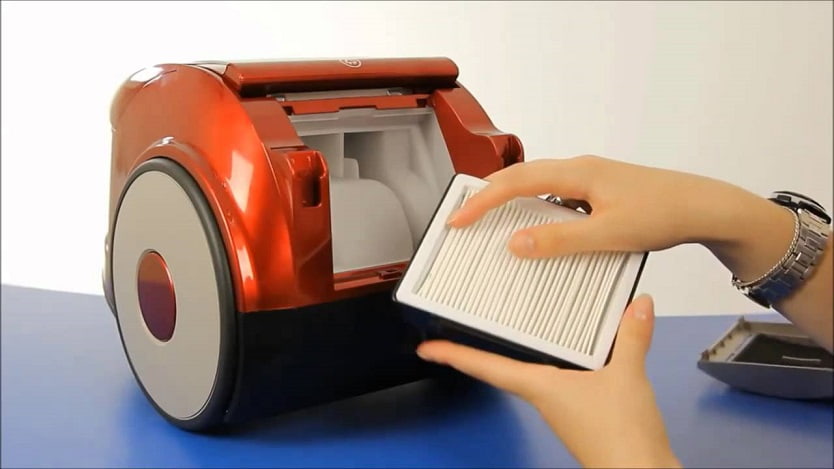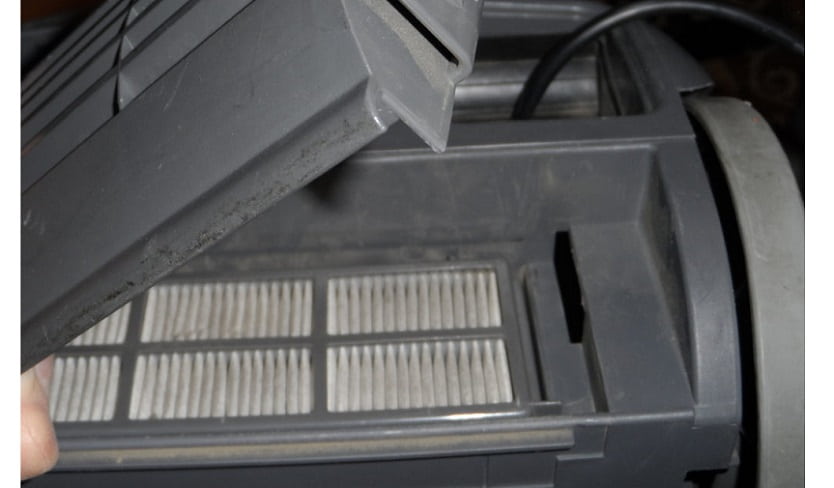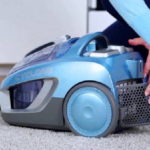Modern requirements for household appliances set rather stringent requirements for the permissible noise level. That is why, if the noise level of a working vacuum cleaner has become much higher, then this should be a signal that it requires additional attention.
The main noise source of a vacuum cleaner is the engine. An increase in the volume of a running engine indicates that it is operating at increased power. Long-term operation in this mode leads to overheating of the engine, this is evidenced by an increase in the temperature of the air leaving the vacuum cleaner. This can lead to engine failure and subsequent costly repairs.
Reasons for the hands-free operation of the vacuum cleaner

There are several main reasons why the vacuum cleaner became loud.
Overfilled dust bin - One of the most common reasons, especially for older models. A dust bag can hold a certain amount of garbage, it must be periodically replaced if it is a disposable dust bag or cleaned (for reusable rag bags). An acceptable level of filling is in the region of 80% of the volume, further the filtering capabilities of the bag are significantly reduced, the suction force decreases, and the engine starts to work at the maximum power. In modern models of vacuum cleaners there is a special light indicator that signals an overfilled dust container.
Tip:
You should not reuse a disposable bag - it has low strength and short service life. It can tear at any time and all debris and dust will fall into the engine compartment, which can cause serious damage. Reusable bags must be washed to improve their permeability to air flow.
Clogged filters - modern vacuum cleaners have a multi-stage air purification system, premium segment vacuum cleaners with HEPA filters are able to capture up to 95–99% of contaminants. Filters become clogged with prolonged use, so additional power is required to allow air to pass through them. Some filters (mainly coarse foam) can be washed and they will almost completely restore their filtering capacity.
Foreign objects - the draft of the vacuum cleaner may weaken due to dust balls, large pieces of paper or rubbish, toys and other objects that will impede the free flow of air into the hose.
Technical malfunction - loud engine operation may be caused by bearing wear. If the filtration system is not cleaned in a timely and complete manner, dry dust enters the engine compartment, settling on moving parts.As a result, the coefficient of friction increases sharply, if the bearings are not lubricated in time, they begin to work virtually "dry", which leads to their wear. It is much worse if the problem is caused by a faulty winding or component failure. In this case, you will have to contact the service center.
Important:
If, when switched on, the new vacuum cleaner immediately starts to work very loudly, you must immediately contact the service center. It is highly probable that the problem is related to a manufacturing defect, so such a vacuum cleaner can be exchanged.
The vacuum cleaner hums strongly: what can be done

If the vacuum cleaner began to hum a lot, then what can be done so as not to call the master? To get started, simply disconnect the hose from the vacuum cleaner. If the engine stops making noise, there is a blockage in either the hose or the brush / nozzle. The hose can be cleaned on your own using the cable used by plumbers to clean the sewer. In addition, it is necessary to clean the brush, on the villi of which wool, hair, dust and other debris accumulate. All this leads to the fact that the air is poorly sucked in, the thrust weakens, it is necessary to increase the engine power.
Important:
Before starting work, be sure to de-energize the vacuum cleaner by disconnecting it from the mains.
If the vacuum cleaner continues to make noise, the filters must be cleaned and replaced. In this case, it is necessary to clean the dust and the body of the vacuum cleaner:
- The chamber in which the dust collector is located must be wiped with a damp cloth and the debris accumulated there must be removed.
- Clean all cracks, ribs, niches on the body of the vacuum cleaner, where dust can accumulate.
- Inspect the attachment point of the dust bag - it must be clean, dust and sand particles will interfere with the tight connection of the dust bag. Dust will enter the motor through leaks, causing increased bearing wear.
- Purge the engine compartment by disconnecting the dust container. In this case, the body must be tilted in different directions, changing the suction power - this will get rid of debris and dust that got into the engine compartment.
If after this the engine continues to make noise and does not suck up dust well, you must contact the service center.
Before using the vacuum cleaner, check that all parts are in place, that the filters are tight and that there are no gaps through which dust can enter the motor compartment. In addition, loose parts due to vibration will cause additional noise and may fail over time.

